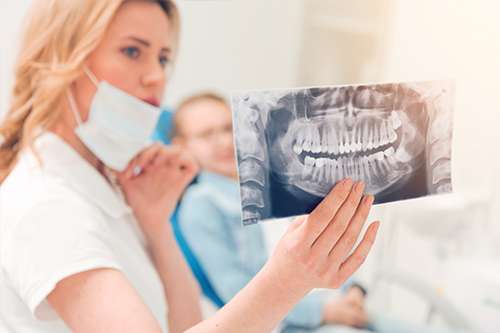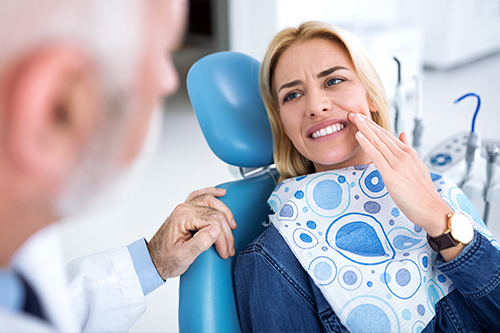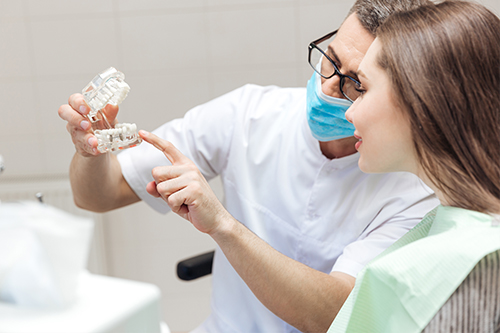Urgent Dental Care: When You Should Seek Immediate Help
Dental pain or trauma can arrive without warning, and knowing when to act quickly makes a real difference in preserving your smile and preventing more serious complications. If you experience sudden severe tooth pain, uncontrollable bleeding, swelling that interferes with breathing or swallowing, or a tooth that has been knocked out, you should seek urgent professional attention. Prompt evaluation helps identify the problem, relieve pain, and reduce the risk of infection or permanent damage.
Not every dental concern is a true emergency, but many situations feel urgent to the patient and deserve same-day care. Persistent toothaches, an exposed tooth root, or a crown that has come off can rapidly affect eating, sleeping, and overall well-being. Our approach is to address symptoms quickly while focusing on solutions that preserve as much natural tooth structure as possible.
When in doubt, it’s better to have a tooth examined than to wait. Early intervention often simplifies treatment and improves outcomes. Our team takes a calm, systematic approach so patients know what to expect from the moment they arrive: fast assessment, pain control, and a clear plan for next steps.
What Happens During an Emergency Dental Visit
An emergency dental visit begins with a focused evaluation to determine the source and severity of the problem. We will review your symptoms, examine the affected area, and — when necessary — take targeted digital X-rays to look beneath the surface. This rapid diagnostic process guides immediate care and helps us decide whether treatment can begin right away or if specialized follow-up is needed.
Pain control is a top priority. Depending on the situation, that may involve local anesthetic, short-term medications, or simple interventions that provide immediate relief. We also assess for signs of infection, swelling, and other issues that could require urgent management to protect your general health. Throughout, we explain findings and treatment options so you can make informed choices.
For many patients, a single emergency visit stabilizes the situation—stopping bleeding, reducing pain, or temporarily restoring form and function. When definitive treatment requires additional time or specialist care, we provide clear instructions for interim care and arrange timely follow-up to complete the restorative or surgical work.
Our clinicians prioritize comfort and safety, using modern sterilization standards and up-to-date materials to deliver care that minimizes anxiety and promotes fast recovery. Swift action combined with empathetic communication helps patients feel supported during stressful moments.
Common Dental Emergencies and Practical First Steps
There are several patterns we see frequently in the emergency chair. Severe toothaches may signal deep decay, an infection, or an inflamed nerve. Chipped or fractured teeth can expose sensitive dentin and cause pain, while a completely dislodged (avulsed) tooth requires immediate attention to improve the chance of saving it. Loose restorations, sudden swelling, and painful wisdom tooth flare-ups also prompt urgent visits.
Simple measures at home can reduce discomfort while you arrange care. Rinse gently with warm salt water to clean the area, apply a cold compress to limit swelling, and use over-the-counter pain relief as directed on the label. If a tooth has been knocked out, handle it by the crown (not the root), rinse it gently if dirty, and attempt to place it back into the socket if possible. If reinsertion isn’t feasible, keep the tooth moist in milk or saliva and seek immediate attention.
For a lost crown or filling, protect the exposed tooth with dental wax or a piece of sugarless gum and avoid chewing on that side. Broken dentures or appliances should be brought in for quick repair or temporary adjustment. If you notice an abscess or persistent swelling, prompt assessment is essential, as infections can spread and sometimes require antibiotics or drainage in addition to definitive dental treatment.
Understanding these basic first-aid steps can ease pain and improve the chances of saving a tooth. Our team will coach you through the safest immediate actions and arrange the fastest possible appointment to address the underlying issue.
Advanced In-Office Treatments to Stabilize and Restore
When you arrive for emergency care, our goal is to stabilize the condition and outline durable restorative options. Treatments range from simple adhesive bonding and new fillings to repair or replacement of crowns and bridges. For teeth with deep damage that affects the nerve, root canal therapy can eliminate infection while preserving the natural tooth—a predictable, tooth-saving option that often prevents extraction.
In cases where a tooth is not salvageable, extraction may be the safest choice to protect surrounding tissues. Even when extraction is necessary, our team focuses on minimizing discomfort and preserving the jawbone and soft tissues to allow for future restorative options. Today’s restorative choices—such as dental implants, fixed bridges, and well-fitting dentures—make it possible to restore function and aesthetics after tooth loss.
Our office is equipped with contemporary diagnostic tools and restorative technologies that streamline care and enhance precision. By combining conservative techniques with advanced materials, we aim to return patients to comfortable, functional oral health with as few visits as possible while maintaining long-term results. The team at the office of Edward J. Sharkey, DMD emphasizes careful follow-through so emergency treatment leads to lasting recovery.
How to Reduce Risk and Support Recovery After Treatment
Preventing future emergencies starts with good daily care and regular dental visits. Routine checkups and timely restorations reduce the likelihood of sudden failures, and early treatment of decay or gum disease prevents many acute problems. We encourage patients to keep up with preventive care and to contact the office when new symptoms appear rather than waiting for pain to escalate.
After emergency treatment, follow your clinician’s aftercare instructions closely. That may include short-term dietary adjustments, medication guidance, and gentle oral hygiene techniques that protect the treated area while it heals. If you experience increasing pain, fever, or changes in swelling after treatment, contact the practice promptly so we can reassess and intervene if necessary.
We also provide practical advice about safely returning to normal activities, using protective gear for sports, and recognizing early warning signs that warrant professional attention. Empowering patients with clear, practical guidance is a key part of our commitment to shorter recoveries and fewer repeat emergencies.
If you have questions about what to do in an urgent dental situation or need help deciding whether your symptoms require same-day care, please contact us for more information.





